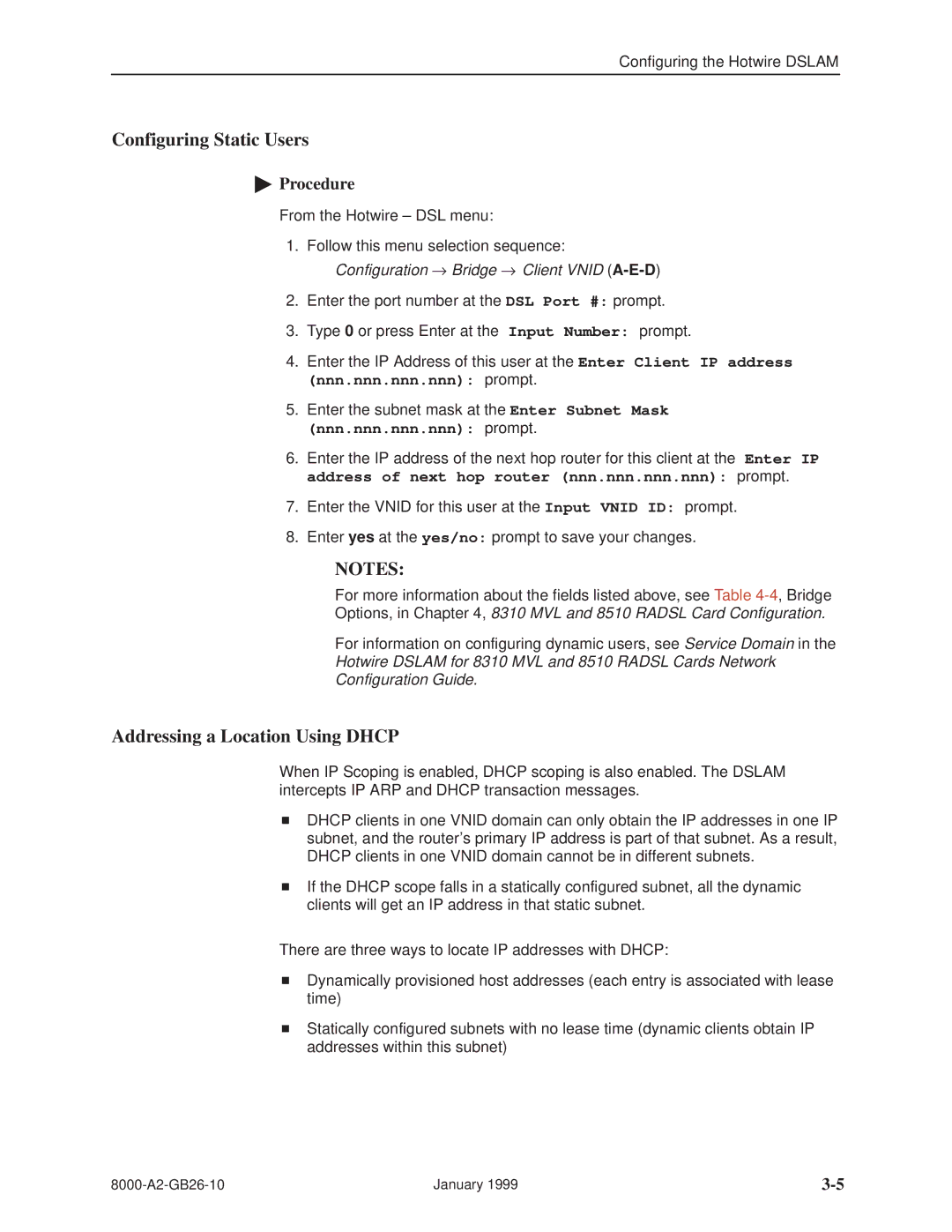Configuring the Hotwire DSLAM
Configuring Static Users
"Procedure
From the Hotwire ± DSL menu:
1.Follow this menu selection sequence: Configuration → Bridge → Client VNID
2.Enter the port number at the DSL Port #: prompt.
3.Type 0 or press Enter at the Input Number: prompt.
4.Enter the IP Address of this user at the Enter Client IP address (nnn.nnn.nnn.nnn): prompt.
5.Enter the subnet mask at the Enter Subnet Mask (nnn.nnn.nnn.nnn): prompt.
6.Enter the IP address of the next hop router for this client at the Enter IP address of next hop router (nnn.nnn.nnn.nnn): prompt.
7.Enter the VNID for this user at the Input VNID ID: prompt.
8.Enter yes at the yes/no: prompt to save your changes.
NOTES:
For more information about the fields listed above, see Table
Options, in Chapter 4, 8310 MVL and 8510 RADSL Card Configuration.
For information on configuring dynamic users, see Service Domain in the
Hotwire DSLAM for 8310 MVL and 8510 RADSL Cards Network
Configuration Guide.
Addressing a Location Using DHCP
When IP Scoping is enabled, DHCP scoping is also enabled. The DSLAM intercepts IP ARP and DHCP transaction messages.
HDHCP clients in one VNID domain can only obtain the IP addresses in one IP subnet, and the router's primary IP address is part of that subnet. As a result, DHCP clients in one VNID domain cannot be in different subnets.
HIf the DHCP scope falls in a statically configured subnet, all the dynamic clients will get an IP address in that static subnet.
There are three ways to locate IP addresses with DHCP:
HDynamically provisioned host addresses (each entry is associated with lease time)
HStatically configured subnets with no lease time (dynamic clients obtain IP addresses within this subnet)
January 1999 |
